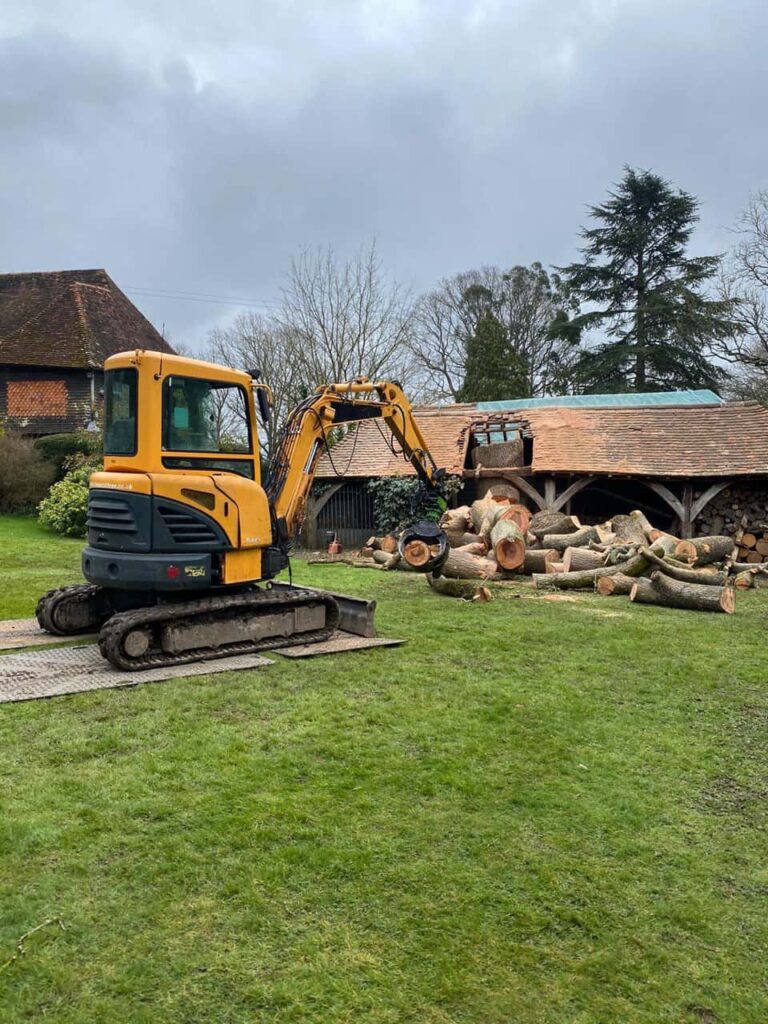Tree Pruning to Optimise Shade Coverage: Keeping Your Garden Cooler in the Summer
As summer approaches, maintaining a cool and comfortable garden becomes a top priority for many homeowners. One effective way to achieve this is through strategic tree pruning. By optimising shade coverage, you can create a more pleasant outdoor environment, reduce energy costs, and enhance the overall aesthetics of your garden. At Hitchin Tree Surgeons, we specialise in tree care and understand how proper pruning techniques can significantly improve shade coverage. In this blog post, we’ll explore the importance of tree pruning for shade optimisation and provide tips on how to achieve the best results.
The Benefits of Optimising Shade Coverage
- Temperature Regulation: Trees play a crucial role in cooling your garden by providing shade. By strategically pruning your trees, you can maximise their canopy coverage, reducing direct sunlight and lowering the temperature in your outdoor space. This makes for a more enjoyable environment, especially during the hottest months.
- Energy Efficiency: By increasing shade coverage around your home, you can reduce the reliance on air conditioning systems. A cooler outdoor environment can help keep your home’s interior temperature lower, leading to potential savings on energy bills.
- Improved Plant Health: Proper shade coverage can also benefit other plants in your garden. Some plants thrive in partial shade, and by optimising the tree canopy, you can create a diverse ecosystem that supports various plant species.
- Enhanced Aesthetics: Well-pruned trees not only provide functional benefits but also enhance the overall appearance of your garden. A lush, shaded area can serve as a beautiful focal point, inviting you to spend more time outdoors.
Key Pruning Techniques for Shade Optimisation
- Crown Thinning: This technique involves selectively removing branches within the tree’s canopy to allow more light to filter through while maintaining the overall shape. Crown thinning can enhance the tree’s structure and encourage healthier growth, ultimately resulting in improved shade coverage.
- Crown Raising: By removing lower branches, crown raising can help create a more open space under the tree, allowing for better air circulation and light penetration. This technique is particularly useful for trees that may be shading out smaller plants below.
- Canopy Reduction: In cases where a tree has outgrown its space, canopy reduction involves shortening branches to reduce the overall height and spread. This technique can help maintain the tree’s health while optimising shade coverage in the desired areas.
- Directional Pruning: By selectively pruning branches that grow towards the sun, you can encourage the tree to develop a denser canopy on the side that needs more shade. This targeted approach allows you to control where shade is optimised in your garden.
When to Prune for Shade Optimisation
The best time to prune trees for shade optimisation typically falls during the dormant season, usually in late winter or early spring. Pruning during this time minimises stress on the tree and promotes healthy growth as it enters the growing season. However, light pruning to maintain shape and health can be performed throughout the year, especially for fast-growing species.
Conclusion
Optimising shade coverage through tree pruning is an effective strategy for keeping your garden cooler in the summer months. By employing techniques such as crown thinning, raising, and directional pruning, you can enhance your outdoor space, improve energy efficiency, and create a more pleasant environment.
At Hitchin Tree Surgeons, we specialise in expert tree care and pruning services tailored to the unique needs of your garden. If you’re looking to enhance your outdoor space and optimise shade coverage, contact us today. Our experienced team is ready to assist you in achieving a beautiful and functional garden that you can enjoy throughout the summer and beyond!
Call us on: 01462 412 994
Click here to find out more about Hitchin Tree Surgeons
Click here to complete our contact form and see how we can help with your tree’s needs.

